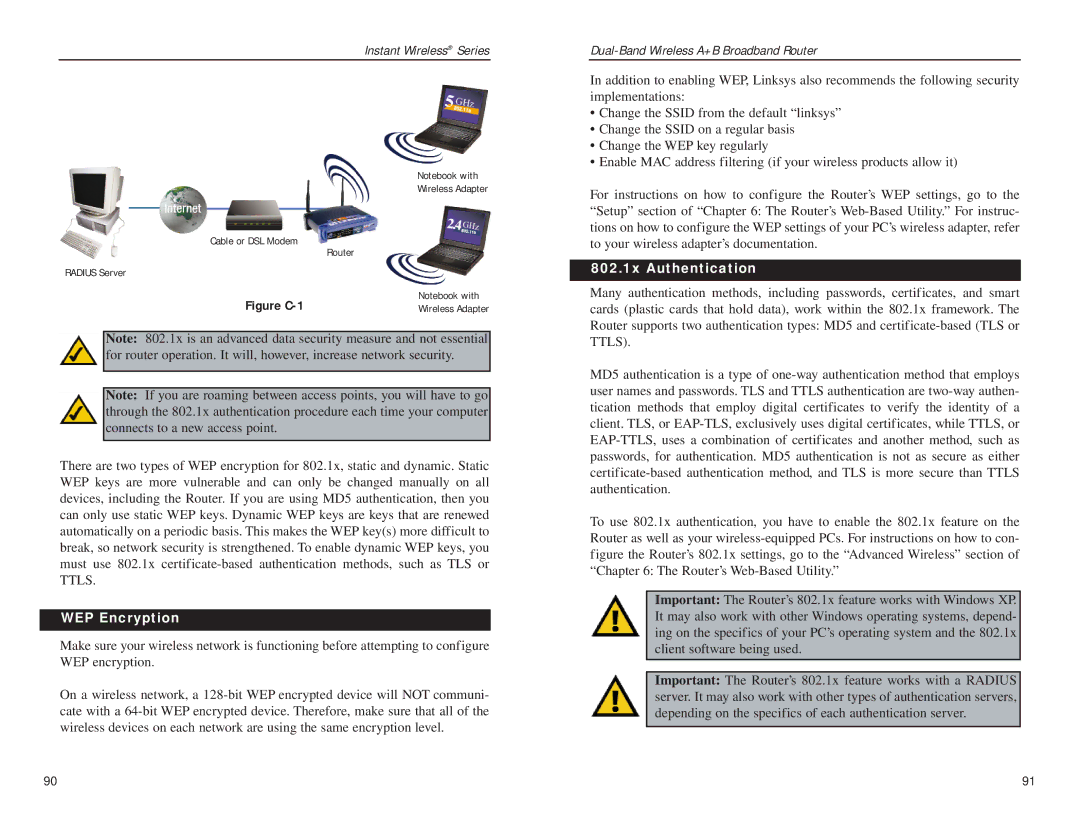
Instant Wireless® Series
|
|
|
|
|
| Notebook with |
|
|
|
|
|
| Wireless Adapter |
|
|
|
|
|
|
|
|
|
|
|
|
|
|
|
| Cable or DSL Modem |
|
|
| |
|
|
|
| Router |
|
|
|
|
|
| |||
|
|
|
|
| ||
RADIUS Server |
|
|
| |||
|
| Figure |
|
| Notebook with | |
|
|
|
| Wireless Adapter | ||
Note: 802.1x is an advanced data security measure and not essential for router operation. It will, however, increase network security.
Note: If you are roaming between access points, you will have to go through the 802.1x authentication procedure each time your computer connects to a new access point.
There are two types of WEP encryption for 802.1x, static and dynamic. Static WEP keys are more vulnerable and can only be changed manually on all devices, including the Router. If you are using MD5 authentication, then you can only use static WEP keys. Dynamic WEP keys are keys that are renewed automatically on a periodic basis. This makes the WEP key(s) more difficult to break, so network security is strengthened. To enable dynamic WEP keys, you must use 802.1x
WEP Encryption
Make sure your wireless network is functioning before attempting to configure WEP encryption.
On a wireless network, a
In addition to enabling WEP, Linksys also recommends the following security implementations:
•Change the SSID from the default “linksys”
•Change the SSID on a regular basis
•Change the WEP key regularly
•Enable MAC address filtering (if your wireless products allow it)
For instructions on how to configure the Router’s WEP settings, go to the “Setup” section of “Chapter 6: The Router’s
802.1x Authentication
Many authentication methods, including passwords, certificates, and smart cards (plastic cards that hold data), work within the 802.1x framework. The Router supports two authentication types: MD5 and
MD5 authentication is a type of
To use 802.1x authentication, you have to enable the 802.1x feature on the Router as well as your
Important: The Router’s 802.1x feature works with Windows XP. It may also work with other Windows operating systems, depend- ing on the specifics of your PC’s operating system and the 802.1x client software being used.
Important: The Router’s 802.1x feature works with a RADIUS server. It may also work with other types of authentication servers, depending on the specifics of each authentication server.
90 | 91 |
